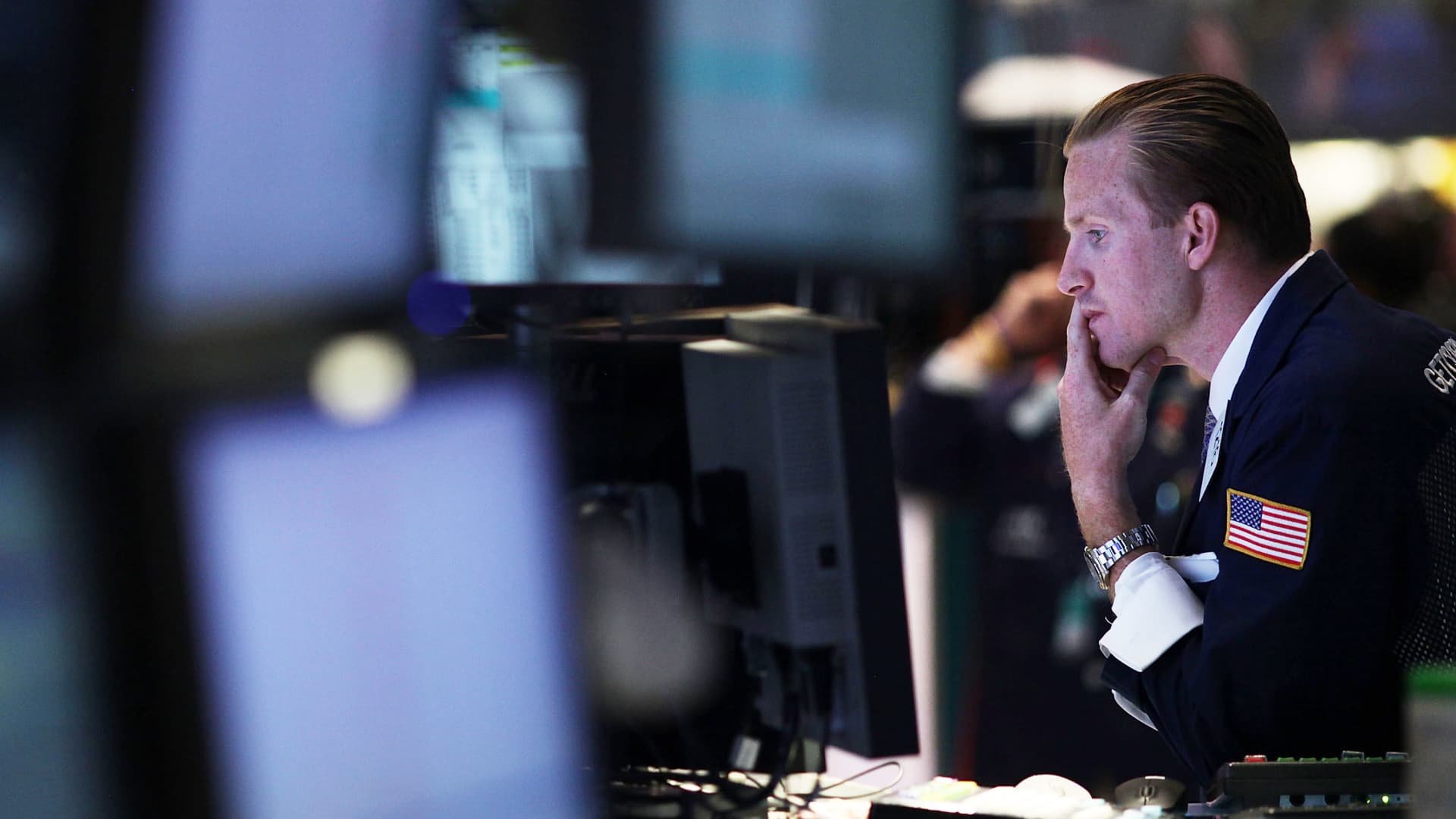
The Dow Jones Industrial Average has had a relatively good year. The 30-stock, blue chip index is on track to end the year down 8.6% as of Friday’s close. That means it has performed the best of the three indexes, with the S & P 500 and Nasdaq Composite slated to lose 19.3% and 32.9%, respectively. It peaked early this year, reaching an intraday high of 36,952.65 on Jan. 5. That’s 11.3% higher than where it closed Friday. The index posted a low of 28,660.94 on Oct. 13, which is about 13.7% lower from where the Dow ended Friday. Sam Stovall, chief investment strategist at CFRA, said the Dow has outperformed this year due to its focus on value-oriented stocks as opposed to growth, which have broadly taken a beating as investors pulled back exposure amid rising concerns of a recession. But he did say 2023 could be a recovery year for the market. In that case, he said the S & P 500 and Nasdaq Composite could see a bigger rebound given the larger drops this year. “The Dow benefited by not having as great exposure to those that fell and having more exposure to those that did well,” Stovall said. But, “the implication would be that what sort of saved the Dow might then hold it back in 2023.” Similarly, he said the stocks that pulled the index down could lead it in the new year. Ten of the 30 stocks in the average are on track to end the year with gains as of Friday, according to FactSet. Here are the best and worst performing stocks in the index this year and what analysts think is coming next. The data, which is from FactSet, is current through Friday’s close. The winners Chevron , the best performing stock this year, is on track to gain 51.2%. The stock was propelled along with other energy names as commodities shot up following Russia’s invasion of Ukraine. Chevron is slightly underperforming the broader S & P 500 energy sector, which has added 58.1% in the same period. The stock is well liked by Wall Street, with the average analyst giving it an overweight rating and expecting an upside of 7.4% over where it closed Friday. Biopharmaceutical name Merck followed, adding 46%. The stock gained steam in late fall following a third-quarter earnings beat and an upbeat outlook that was driven by strong performance from some of its drugs. Some 65% of analysts covering the stock rate it overweight or buy. But, the group sees little upside from here, with a projected gain of just 1.8%. Rounding out the top five is Caterpillar , which has gained 16% so far this year. Investors have looked to the stock for its solid earnings and future expectations as growth stocks floundered, particularly in the final months of the year. In all, 41% of the analysts covering Caterpillar ate it buy or overweight, but the consensus is the stock should see a slight drop of 0.2% over the next 12 months. The losers Intel is the worst performer within the index, having lost 49.3%. Advanced Micro Devices , which is not in the Dow, surpassed Intel as the biggest chipmaker by market cap for the first time ever this year. The chip sector has felt continued challenges from supply chain disruptions, paired with consumer spending shifting away from goods that require chips to services, this year. In all, 61% of analysts rate the stock a hold with a price target that implies a 15.2% upside. Salesforce was close, dropping 49.1% so far this year as investors rotated out of growth in favor of value names amid recessionary concerns. Still, analysts like the stock, with the average price target showing a 50.8% upside. But even if that upside is met, the stock would still be a far cry from its 52-week high of $260.78 on Dec. 28, 2021. This underlines the challenges tech will continue to face as the economy contracts. The year ahead could be especially difficult for Salesforce given its focus on headcount-specific workplace technology as companies move to layoffs or hiring freezes. Disney is also among the worst performers, shedding 43.2%. The entertainment giant has had a dramatic year, punctuated by the replacement of CEO Bob Chapek with Disney’s previous CEO, Bob Iger. Investor concerns stem partially from the fact that the company has lowered its 2024 subscriber target for Disney+. More than four-fifths, or 82%, of analysts rate the stock overweight or buy, with an expected upside of 35.9%.
